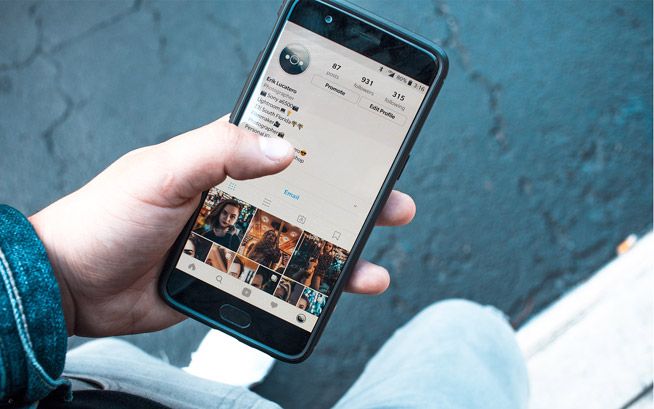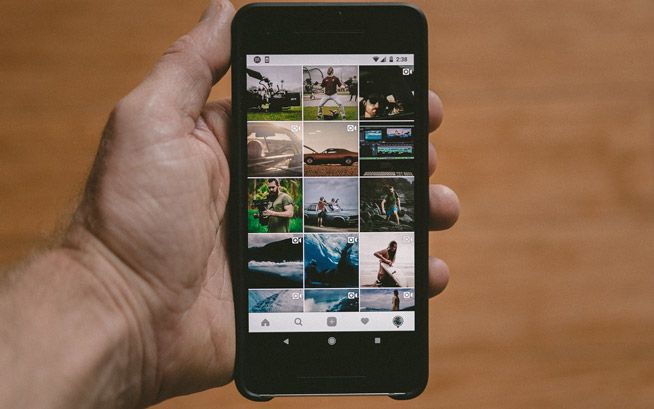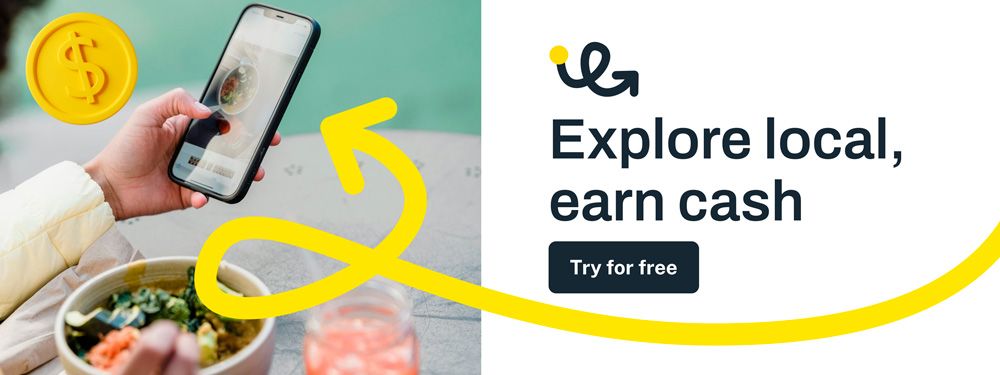10 Types of Social Media Influencers
Discover a variety types of influencer on social media from nano to macro. Explore how to scale your marketing activities with influencer marketing.
Nancy J. Hassler
The digital realm is filled with influencers categorized by tiers, niches, and other criteria. This diversity of vibrant personalities can assist business owners in crafting a productive strategy, enhancing brand image, and improving performance metrics.
Partnering with endorsers can elevate your brand to new heights and inspire the adoption of innovative approaches by starting with audience expansion. Additionally, engaging with multiple counterparts can prove valuable for both parties and lead to impressive results.
This year, the global social media endorser market is projected to reach approximately $35 billion due to its impressive growth trajectory, with no apparent downturn in sight. Representatives from multiple niches enable small business owners to establish a robust partnership network that resonates with their target audience.
While endorsers may differ in category and follower count, each offers unique benefits and relevant solutions. Explore the different tiers of content creators and other specialists to determine whether collaborating with a micro-influencer is the right choice or if you should seek a trendsetter with a larger following.
Effective Micro-Influencer: Leveraging Authentic Engagement for Business Growth
While the number of followers for this category of influencers typically ranges from 1,000 to 100,000 or even 200,000, their advantage lies in deeper and more authentic engagement. With activities focused on narrowly targeted niches, these individuals enjoy more influential and credible support, thanks to their more personal and lasting interactions with followers.
Replacing paid advertising with genuine experiences creates more authentic endorsements that resonate with various audience segments. Implementing micro-influencer marketing solutions into small business strategies allows owners to strengthen their company’s connections with customers, while affordable prices simultaneously enable collaboration with multiple media personalities.
Navigating the Nano-Influencer Landscape for Business Success
Although these social media personalities often have an audience of 1,000 to 10,000 followers, their advantage lies in having a closer connection with their followers compared to their larger counterparts. Small business owners leverage this powerful asset for audience expansion and engagement as their engagement rates reach nearly 5%, surpassing those of other types of influencers.

Less polish in published content, along with an emphasis on authenticity, helps build trusting ties with subscribers, ensuring they receive honest feedback on the company's services and the products they collaborate on. Such partnerships are also beneficial for small business owners due to lower costs, with fees ranging from $10 to $100 per post, making nano-influencer marketing an accessible yet promising strategy for companies with limited budgets.
Innovative Strategies With Virtual Influencers That Redefine Audience Interaction and Brand Loyalty
Virtual characters represent a significant breakthrough in modern times, driven by the rapid advancement of high technologies. This digital influencer does not exist in reality; it is created using CGI and AI technologies and managed by agencies and brands designed to convey specific image and messaging goals. Brands have complete control over these categories of promoters, allowing them to fine-tune the parameters and visual elements, crafting characters to evoke emotional reactions from the audience and deepening the connection established.
Utilizing these innovative solutions will help companies stand out in a competitive market by attracting the attention of various demographic groups. Among the key advantages is the reduction of risk due to the absence of scandals that could harm the company's reputation and other potential issues.
The Dual Edge of Celebrity Influence: Fame Meets Brand Strategy
This category includes individuals who have gained fame and recognition on various platforms. Their audience reach often exceeds 1 million subscribers, thus categorizing them as mega endorsers. However, not every star is regarded as such, as their influence and the nature of their fame vary.
Compared to personas with a smaller number of followers, engagement from a celebrity audience tends to be less personal, as fame often outweighs impact in this context. However, collaborating with such a social influencer offers significant benefits, delivering substantial brand visibility and awareness.
Unlocking Success: The Advantages of Macro-Influencers in a Competitive Market
As the name suggests, macro-influencers are primarily distinguished by their large follower base, typically ranging from 100,000 to 1 million followers. Often seen as experts in their fields, these social media personalities can significantly impact consumer behavior due to their visibility and authority on platforms like Instagram, YouTube, and others.

Collaboration with these media characters is highly profitable for small businesses, as it opens up the possibility of generating millions of impressions in a short time. Their professionalism, which often exceeds that of other types of influencers, ensures the creation of attractive and engaging content that enhances brand image and increases customer engagement rates, boosted by the approval and interaction with these impactful individuals.
Why Brands Are Embracing Niche Influencers for More Effective Marketing
Focusing on specific market industries or interests — such as health and wellness, beauty, travel, and self-development — niche endorsers target particular topics, products, or hobbies. Such focus helps create a dedicated audience and fuels passion for the sphere.
Although these influencers on social media are divided into many subcategories, it is crucial to understand the differences between gaming, lifestyle, and beauty endorsers as separate counterparts and specialized figures as a whole tier, uniting all of them while still possessing their unique features. The latter can balance between diverse topics. For example, while streaming a game, a trendsetter may share lifestyle tips and try different formats. Gaming influencers, in turn, focus exclusively on video games, while lifestyle personas tend to concentrate on a broader range of everyday topics.
Cooperating with niche promoters can benefit small business owners, particularly if their industry aligns with the influencer’s area of expertise. This partnership helps expand the audience and enhances targeted outreach, increasing customer engagement and potentially boosting sales in the long run.
Captivating Audiences: The Influence of Lifestyle Content Creators in Digital Campaigns
Individuals who have cultivated a substantial audience on social media by focusing on everyday life topics are known as lifestyle content creators. By sharing their experiences and life hacks related to habits, travel, home decor, and more, they attract diverse segments of users. It makes collaborations advantageous for both brands and their followers, who eagerly anticipate new products and insights.
Among the prominent famous social media influencers in the lifestyle niche are the couple Murad and Nataly Osmann, renowned for their photo series "Follow Me." Their content revolves around romantic travels and cultural experiences. Compellingly showcasing your products and services can capture significant audience attention, and if it aligns with their interests, it can lead to increased sales.

Mega Influencers: Driving Engagement and Brand Awareness Worldwide
This influencer tier boasts the largest following, starting at 1 million and rapidly expanding through consistent social media activity and regularly publishing high-quality, eye-catching content. Often, these are celebrities or popular social media bloggers whose broad reach significantly enhances brand visibility and fosters trust in their products and services, thanks to the audience's confidence in their recommendations.
Often not tied to a single niche, they have followers from various demographic groups, opening up numerous avenues for brands to expand their potential customer base and conversion rates. Another asset is their effective implementation of large-scale advertising campaigns alongside trends that often emerge under the watchful eye of mega-endorsers, which brands can leverage to adjust their strategies.
Engaging Gamers: The Power of Influencer Marketing in the Gaming Industry
Gaming influencers, ranging from professional players to amateurs, are media personalities specializing in creating and distributing content related to the gaming industry. They share live streams, recorded Let's Plays, tutorials, and reviews. Notable figures in this field include Ninja (Tyler Blevins), known for his Fortnite streams, and Vegetta (Samuel De Luque), the owner of MAD Lions EC.
The assistance of these types of influencers in growing small businesses is invaluable, especially given the rising popularity of video games and their audiences. Regularly creating interactive content, including live streams and contests, can draw the interest of a significantly larger number of subscribers. It helps build a community around the brand while reaching out to a new audience, further increasing engagement.
The Allure of AI Influencers: Connecting with Consumers Through Technology
This groundbreaking concept of modernity is closely related to virtual endorsers, as they are both computer-generated characters that exist in the digital realm and are designed to engage with audiences on social media platforms. However, while AI influencers can also be virtual, they operate using artificial intelligence to simulate interactions similar to humans.
Due to the use of computer-generated imagery (CGI), motion capture technology, and other forms of artificial intelligence, these digital personas mimic human character, appearance, behavioral traits, and emotions, making them particularly appealing and simultaneously cutting-edge for the audience and encouraging them to engage in activities and service offerings.
A striking example of types of influencers created using AI is Miquela, a 21-year-old robot living in Los Angeles. She has gained nearly three million followers thanks to her musical activities and collaborations with brands such as Dior, Calvin Klein, and Prada. Similarly, the iconic doll Barbie has transitioned into the digital realm, amassing an audience of almost four million. Barbie promotes various brands across categories, including fashion, accessories, and beauty, while also participating in social movements, such as her support for Black Lives Matter.
By dividing into different categories, influencers can significantly impact a business, providing owners with the opportunity to leverage their unique advantages. Each tier and niche of influencers has its own audience, allowing brands to target specific market segments more effectively.
How and Where to Choose Influencers on Social Media
Here's a comprehensive guide on how and where to find the perfect social influencer for your brand:
-
Are you looking to boost brand awareness, drive sales, or enhance social media engagement? Your objectives will shape the types of influencer you need.
-
Study your audience's demographics, interests, and online behavior to identify influencers whose followers closely resemble your ideal customers.
-
Determine which social media platform aligns with your brand and where your audience is most active. Popular platforms include Instagram, YouTube, TikTok, and Twitter.
-
Various influencer marketing platforms like Loca offer databases of influencers from different niches. These tools can simplify your search and provide valuable data on influencer performance.
-
Once you've identified potential influencers, thoroughly review their profiles. Assess their follower count, engagement rates, content quality, and consistency.
-
High follower counts don't necessarily equate to high engagement. Pay attention to likes, comments, shares, and click-through rates.
-
Investigate an influencer's history of brand collaborations. Look for successful partnerships and indications of professionalism and reliability.
Once you've identified influencers, reach out to them. Initiate a conversation, express your interest, and discuss collaboration possibilities.
- Pay attention to micro and nano-influencers. They often have highly engaged, niche audiences and can be cost-effective options, particularly for small businesses.
Are you ready to take your brand's social media presence to the next level?
